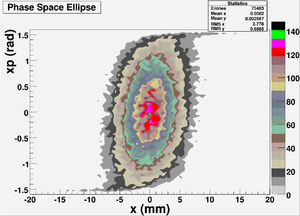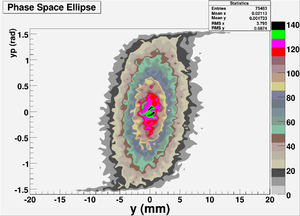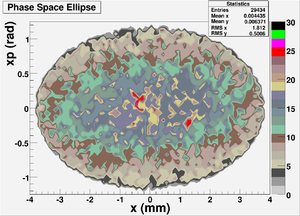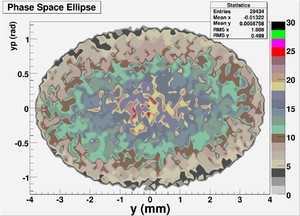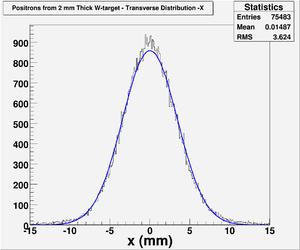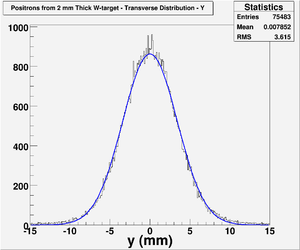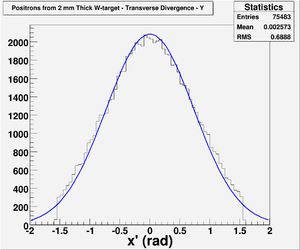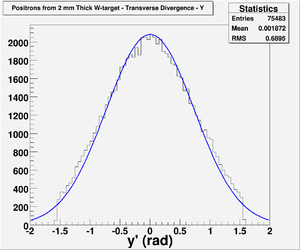Optimization of Positron Capturing
- Thickness of the Tungsten target: 1.25 mm
- Beam size at Tungsten target: Gaussian,
Optimization with ELEGANT Simulation on the Region from Gun Exit to Tungsten Target
Emittance: (Not sure yet, need to be calculated)
Average Peak
Beam Energy:
Energy Spread:
Alpha Function:
Beta Function:
RMS longitudinal Bunch Length:
GEANT4 Simulation for 2 mm W-Target
Thickness of the Tungsten target: 2 mm
Electron Beam:
Beam size at Tungsten target: Gaussian,
Beam divergence at target: 0
Beam Energy:
Energy Spread:
A volume called "detector" is placed at the of the W-target to get the information on the only of the outgoing positrons from the W-target. Followings are from "detector".
Phase Spaces of e+ Created
Phase space for positrons coming out W-target. Include 100 % of the particles
X phase space
Y phase space
Phase Spaces ellipse of 39% particles
Total positrons created are 75483, and 39 % of them will be 29438. Core 39% area of the phase space ellipse is RMS emittance, .
Long and short axis of these two ellipse are: a = 3.791; b = 1.189;
X phase space
Y phase space
Transverse Beam Size
Y
Transverse Beam Divergence
X
FCN=1205.9 FROM MIGRAD STATUS=CONVERGED 60 CALLS 61 TOTAL
EDM=9.41429e-08 STRATEGY= 1 ERROR MATRIX ACCURATE
EXT PARAMETER STEP FIRST
NO. NAME VALUE ERROR SIZE DERIVATIVE
1 Constant 2.08367e+03 9.54533e+00 1.29688e-01 1.45076e-05
2 Mean 1.65233e-03 2.93970e-03 4.98630e-05 -1.42668e-01
3 Sigma 7.32175e-01 2.40413e-03 1.53830e-05 8.15997e-02
